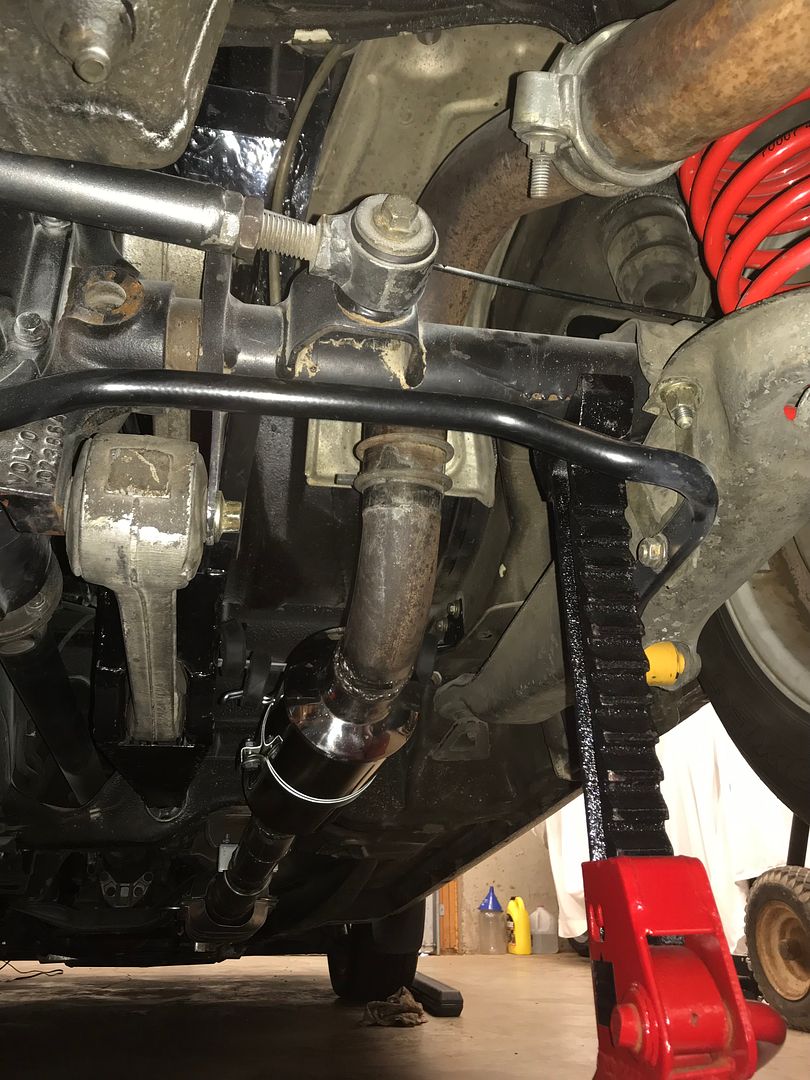"Got them old turbo 4 cylinder 3" exhaust dronin' blues"
Dats right!
Find here the
last correction to the final round of changes..... that didn't turn out as hoped.
In the previous version of my DD, I ran a factory 9 series down pipe & CAT, followed by the TME exhaust that IPD sold all those years ago. Never an ill sound came from the exhaust.... it was pretty sweet sounding for a banger. Well with the
last hurrah changes of the 3" DP & high flow 3" CAT, then custom connected to that same TME exhaust, something went (as Jeremy Clarkson says)
horribly wrong! When cruising the interstate at 70mph, a
GOD Awful droning sound came into the cabin, that was unbearable for an old guy like me. The engine would be around 3100 to 3400 rpm when this nasty droning would occur. I simply couldn't drive this sedan to work each day and endure this punishment.
Scouring the web, it seems there are countless stories of turbo 4 cylinder engines, which post "upgrade" to a 3" exhaust all exhibit this irritating tendency. I found two primary solutions; install some fashion of a Helmholz pipe, or add an exhaust resonator to the single muffler. I chose the latter option....

The VIBRANT stainless bottle type 5" got the nod.... reviews were favorable.
The OE location is best to keep the resonator tucked up and away from harm. Subject OE resonator is 6+ inches in diameter, and mine smaller. I bought a replacement resonator mount that I had to reduce diameter, cut & fit so it would clamp tightly on the VIBRANT. I repurposed the old TME pipe hanger with a cascaded set of Volvo factory rubber hangers:

To get the smaller resonator as low as possible (and to fit the basic TME bend in the stainless in front of the axle) I had I had to offset the factory steel hanger mounts about 20mm. Stripped the OE zinc plating in muriatic acid, then welded and finally primer/painted:


And because anal OCD Engineering behavior, it had to be ~ level as well:

With the resonator now properly supported, I needed to determine how much offset I would need to throw into the stainless pipes to mate up properly with the CAT exit. The solution was staring me right in the face..... "the beauty of this plan is in it's simplicity"....

Using the sacrificial straight pipes determine that I needed about 1 1/4" offset, and that amount would level the resonator with the vehicle body. I confirmed the rockers were at about 8* as I had the sedan supported on 6 ton stands; all pipes were properly cut so the TME muffler and Vibrant resonator also hung at 8*.....


After plenty of measuring & checking, I Metabo free hand cut the 2.5 inch stainless mandrel 180* bend I bought. Wall thickness was barely .055", and I think it was 304 stainless which turned out to be a bitch to weld with my MIG machine. How about this fixturing job to prepare for weld?

























